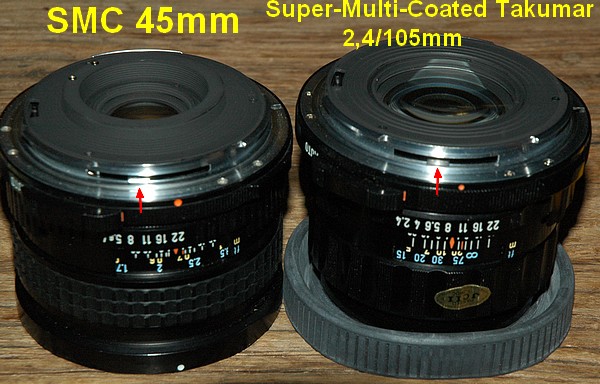Il semble en effet que certains objectifs fonctionnent en auto et d'autres en manuel.
En fait j'ai creusé la question hier sur le net et je suis tombé sur un document très intéressant sur galerie-photo:
http://www.galerie-photo.com/manuels/pentax-etude.pdf
Il y aurait plusieurs générations d'objectifs et tous ne sont pas couplés avec le prisme.
Le mien est un super takumar 105/2.4 et fonctionne en mode manuel avec un prisme cellule deuxième génération (pas la première version CdS) mais ne réagit pas en mode auto.
Dans la notice ci-dessus, il a l'air évident sur les SMC takumar et les SMC pentax sont couplés, pour les autres ce n'est pas aussi évident.
Si je compare à mon spotmatic qui est assez similaire en conception, la mesure à pleine ouverture ne se fait qu'avec les SMC takumar mais pas avec les précédents pour lesquels il faut être à ouverture réelle (par contre je crois que l'aiguille bouge sur les spotmatic quand on est en auto , la mesure serait "juste" fausse, à vérifier quand mon spotmatic sera déballé, là aussi je n'ai que des Super takumar, je ne peux pas vérfier avec des SMC takumar)
Dans la notice Pentax le passage en manuel changerait le mode de fonctionnement du prisme via un micro switch et l'activerait donc.
Ça ressemble beaucoup au comportement de mon prisme (rien en auto, mesure en manuel).
Cela serait confirmé par l'article suivant:
http://en.wikipedia.org/wiki/Takumar
Par ailleurs, concernant la chainette, il serait alors normal qu'elle ne bouge pas avec mon Super takumar. Pour le moment je n'ai pas la possibilité de vérifier avec des SMC Takumar (j'en ai un emballé dans mes cartons de déménagement) ni sur un SMC Pentax (je n'en ai pas).The Takumar designation was used on lenses designed for Asahi's 35mm cameras, 6×7 cameras, and for other purposes too.[3]
Takumar lenses were made in M37 screwmount for the original Asahiflex cameras and continued into the M42 period.
Auto-Takumar lenses were a type of preset lens. The user selected an aperture then engaged a lever to energise the stopping-down mechanism. The camera would then trip this mechanism when the shutter was fired.
Super-Takumar lenses featured an early form of lens coating (to prevent flare) and a more sophisticated stopping-down mechanism. There was a switch on the lens to select "Auto" or "Manual" modes. In manual mode, the lens would always be in the selected aperture. In Auto mode, the lens would remain wide open (at maximum aperture) until a pin on the rear of the lens was pushed in. This pin would be automatically pushed in by the camera when the shutter was tripped.
Super-Multi-Coated (later SMC) Takumar. These lenses introduced Asahi's lens multi-coating process. They also introduced a lug on the rear of the lens which moved with the aperture selected. When used with a camera body which could read the lug, this enabled the use of open-aperture metering. Examples of such cameras are Asahi's Spotmatic F and the ES/ESII.
Si certains peuvent confirmer tout cela?








